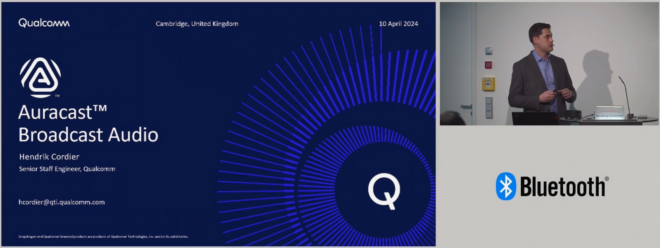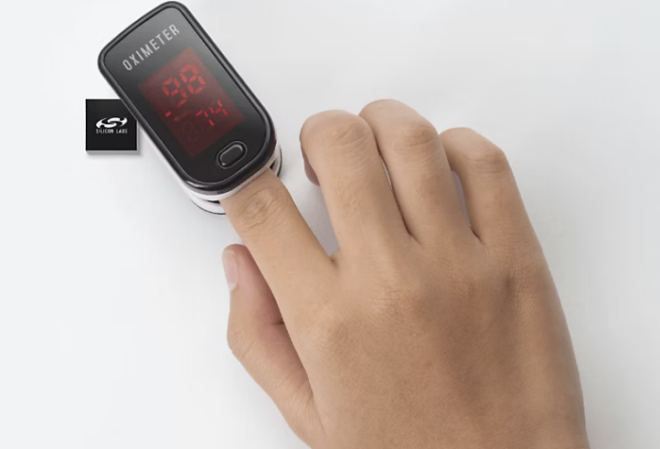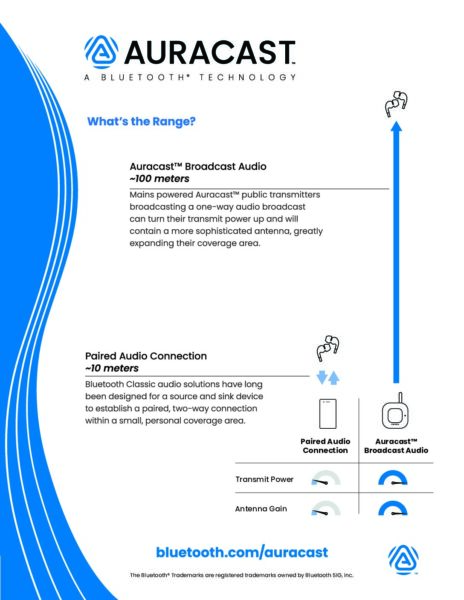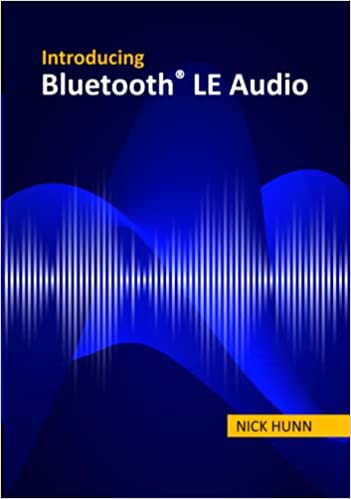Many of you may know that radio spectrum is a valuable commodity and that globally there are clear rules (and often licenses that cost money) in order to use particular frequencies and bands. The radio frequencies in each country are “owned” by that country, and each country has the ability to permit or license specific use in certain frequencies. Fortunately, some bands are allocated in the same way with similar rules across many countries – these are called harmonized bands.
Bluetooth® operates in a harmonized frequency band that is one of the ISM bands (ISM=Industrial, Scientific and Medical) along with other technologies that also use the band (for example Wi-Fi or microwave ovens). Products are allowed to operate without a license using the ISM bands, but must adhere to a set of rules that help everyone benefit from the value provided by the spectrum. These rules define such things as maximum transmit power levels and how much spill over there can be in adjacent frequency bands. This means technologies like Bluetooth have what are called “guard bands”—free spectrum at the ends of a frequency band—in order to ensure there are no transmissions that spill over into the next band.
In the US, the FCC allocated the frequency band “above” the ISM band Bluetooth uses to a company called Globalstar specifically for the operation of a satellite communications service. As I understand it, Globalstar has not been as successful as they hoped in operating that service and have been exploring other ways to use the spectrum (although it was allocated for a specific use).
Globalstar proposed a new service called TLPS (terrestrial low power service) which would use a portion of their allocated band and a portion of the ISM band spectrum. In order to do this they have been asking the FCC to allow them to use this “satellite spectrum” for a terrestrial service AND for a change in the rules for the ISM band (just for them) so that only they can use a portion of it in an overlapping/spill-over way.
This seems wrong on many levels. Why should the FCC allow one company to use the ISM band with preferential rules only applying to them? If they could not operate a successful satellite service then they have little track record to show they would be successful at operating a different commercial service. Shouldn’t the FCC take the frequency back and allocate it to someone who could operate the service successfully?
In addition, the Bluetooth SIG (and others) has maintained this kind of overlapping use would cause interference and a detrimental impact on the other users of the ISM band, particularly the users of the hundreds of millions of Bluetooth devices sold in the US.
Recently, the FCC requested the Bluetooth SIG and other interested groups attend a technical demonstration session with Globalstar at the FCC Technology Center and attempt to highlight, in some way, if the interference concerns were valid. From what we saw, they are.
The demonstration sessions were held in a rather small space that meant we could not conduct some of the demonstration scenarios we had prepared. Nevertheless, our demonstrations with Bluetooth Hearing Aids and Bluetooth Smart Lighting both showed a clear impact from TLPS. The Bluetooth Hearing Aids showed packet loss increasing from a “correctable level” around 10% to nearly double at 20%—for end users this could mean broken up, or significantly lower audio quality. The Bluetooth® Smart Lighting demonstration used multiple Bluetooth lights spread around the room and when TLPS was present clearly showed a fourfold increase in the number of times certain lights did not receive a command to turn on or off or change color. Two clear demonstrations of the interference caused by TLPS.
Due to these results, we were beyond surprised this week to see claims by Globalstar that TLPS caused no interference with Bluetooth—especially when they were present for our demonstrations and saw the results. There is clear interference with products and services in the ISM band from the proposed TLPS service.
The Bluetooth SIG has cooperated with the FCC throughout this lengthy process. You can see our filings with the FCC here, including our recent filing summarizing our findings from the demonstrations. We believe we have now shown there is a concerning level of interference caused by this overlapping TLPS service.
Moreover, I believe that it is wrong and a dangerous precedent to allow one company to have different rules for using the ISM band. For the sake of the most beneficial use of the ISM band in general and the millions of U.S. Bluetooth users in particular, I do hope the FCC denies the Globalstar TLPS proposal.















![ABI Growth Chart.png 815076338[1]](https://www.bluetooth.com/wp-content/uploads/2024/03/ABI_Growth_Chart.png_8150763381-660x384.png)
![shutterstock 1653733096[1]](https://www.bluetooth.com/wp-content/uploads/2024/03/shutterstock_16537330961-660x372.jpg)


![2312 CES Handout Images FINAL existing pdf 464x600[1]](https://www.bluetooth.com/wp-content/uploads/2024/01/2312_CES_Handout-Images_FINAL-existing-pdf-464x6001-1.jpg)
![2312 CES Handout Images FINAL unlimited pdf 464x600[1]](https://www.bluetooth.com/wp-content/uploads/2024/01/2312_CES_Handout-Images_FINAL-unlimited-pdf-464x6001-1.jpg)












